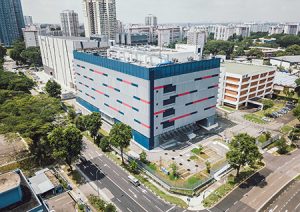Emerging markets to drive Asia Pacific data centre real estate surge
- Asia Pacific’s data centre real estate is poised to enter a new cycle of emerging market led growth

Asia Pacific’s data centre real estate is poised to enter a new cycle of growth, led by the region’s larger emerging markets, according to a new study by JLL. Asia Pacific is home to three of the world’s four most populous countries (mainland China, India, and Indonesia), providing attractive locations and fuelling a new cycle of operators and investors’ opportunities.
Surging internet usage and smartphone adoption, coupled with social media, e-gaming, video streaming, and big data applications, are all fuelling requirements for extra data centre real estate capacity across the region.
According to JLL’s recently published The Rise of New Data Centre Growth Markets demand for data centres continues to grow exponentially in Asia Pacific, fueled by cloud computing and the consumer mobile internet. The market for hosting, storage, and computing cloud services is expected to be worth USD 163 billion in 2021, which is an almost 30% increase over 2017, says the report. Additionally, cloud traffic in Asia Pacific is set to grow by more than 150% over the same period.
“The sheer scale of growing data consumption makes data centre infrastructure a compelling global and regional opportunity for both investors and operators. There are clear opportunities across the Asia Pacific data centre sector, in both emerging and mature markets, as demographics and regulatory frameworks evolve,” says Bob Tan, Senior Director, Alternatives, Capital Markets, JLL.
According to JLL, investor, and operator activities in mainland China, India, and Indonesia have grown significantly in recent months. They will further expand as demand for data centre services surges in these high-growth markets. JLL believes that all three emerging markets are currently being underserved by existing supply and facing strong demand from local and international operators.
Mainland China has more existing and upcoming supply than any other market in Asia Pacific, with significant investments and commitments announced over the past 18 months. In June 2020, Blackstone announced an investment of USD 150 million in Chinese data centre provider, 21vianet. Additionally, GDS and GIC announced a partnership in 2019 to build and operate data centres in China, signalling the market’s longer-term potential.
In India, the Adani Group has plans to invest around USD 10 billion in data parks and has inked a memorandum of understanding with the US-based Digital Realty in 201915. Colt DCS also broke ground for a new hyperscale facility in Mumbai in 2020, one of India’s most extensive hyperscale facilities. Equinix has announced its entry into India in 2020 through the acquisition of GPX India.
In Indonesia, the new INDIGO cable landing in Jakarta connecting Singapore to Sydney adds to Indonesia’s attractiveness as a data centre market. In November 2020, we saw Space DC open its first Indonesian data centre19. Separately, Keppel Group has partnered with the Salim group to develop its first data centre jointly. In contrast, the Princeton Digital Group has entered the market from its acquisition of majority stakes in XL Axiata’s data centre portfolio.
Despite the clear opportunities in the region’s emerging data centre markets, there is also a strong local component to the investment evaluation criteria, which needs to be considered. Data localisation laws and other regulations and factors such as proximity of markets served and access to power supply require a nuanced view of the sector.
Key occupier and investor themes beyond 2021
Power supply and microlocation:
There are other considerations governing market entry, such as water and fibre networks’ availability and connectivity to cable landing stations. Micro-location factors for all markets include a need to be located away from the flight paths of airports and areas prone to natural disasters, where they need to be outside of 100-year flood plains or earthquake faults.
The evolving role of renewable energy:
Carbon emissions are becoming an increasingly significant challenge as data centre real estate capacity and energy consumption grow. A growing number of governments, including those in mainland China, Singapore, South Korea, and Japan, are already making ‘Net Zero’ pledges carbon neutral by the second half of the century. These commitments have clear implications for data centres, and operators are increasingly likely to look at renewable energy sources to meet their power supply needs.
Operating models and market dynamics:
The colocation market has gradually evolved. The market share of retail businesses is likely to be limited going forward as enterprises have been consolidating their requirements. Simultaneously, the movement towards hybrid and cloud deployments has also contributed to a higher degree of interest in the wholesale business. Several established operators have embraced the trend and are actively pursuing opportunities in the hyperscale market. New platforms and investors tend to look at this segment since it is easier to understand and provides speed to market and scale.
Partnerships to entry:
Many operators looking to expand to new and emerging markets choose to partner with local developers as international groups may require joint ventures for development and/or operation from a regulatory standpoint. Local developers also bring market-specific expertise to the table, such as access to land banks, the ability to navigate complicated approval processes, and sourcing adequate power supplies. A local partner will be experienced in building up the superstructure and carrying out the necessary civil works.
While the regional drivers are elevating established markets along with the entire sector, we’re now entering a new phase for emerging markets as they embrace the growth of data centres. At this point, the big focus now is on identifying the right data centre opportunities in the region’s emerging markets, as investors and operators are focused on the sector’s prospects,” says James Taylor, Head of Corporate Solutions Research, Asia Pacific, JLL.






